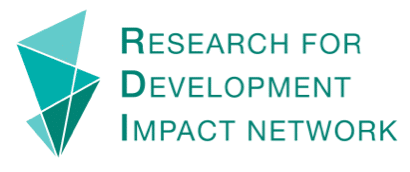Participatory approaches are a respectful, two-way exchange. An exchange that has shared roles, responsibilities and involvement in production. It is a collaborative work style – a style that encourages diversity throughout people and their ideas. These interactions need to move away from being transactional – instead becoming transformational. Co-designing and participatory approaches are to be an experience that encourages collaboration and equality in decision making.
- Prepare, Manage, Review
Prepare for success by identifying the goals, outcomes and shared values and roles and responsibilities before beginning. Ensure that it is an equal partnership for everyone involved. During the project, manage challenges that arise together. Also, continuously reflect and review with each other to assess the progress so far. This will provide chances to measure the impact and value at different stages. This includes a standard definition of impact, and standards for measuring and reporting
- Understand the stakeholders first
Co-designing must begin with understanding the environment, communities and people. Development professionals need to work directly with those who will be affected by the project and its intended outcomes. Additionally, collaborate during these interactions to gain an insight into knowledge, including lived experiences. Ensure that collaborating measures continue throughout the project to ensure a democratic process.
- Designer = Facilitator
Project designers working outside their own community context, ideally, become project facilitators instead. In participatory approaches the lead researcher/s becomes facilitator/s to enable collaborative project design. They are to use their presence to empower the participants. Encourage open discussions within the group. Likewise, check that everyone has an equal opportunity to share their own opinions and experiences. Facilitate these discussions to establish a solution together. - Participatory Action Research (PAR)
PAR allows the community that is involved in the research are to become the foundation. This approach encourages regularly sharing of experience, knowledge and perspective from each member. Make action the key focus for the community and the research. Further, empower the affected community to seek improvement and advocacy. This will generate involvement and knowledge about social change
- Training
Training provides everyone involved with additional skills and tools. Make the training participatory. Also encourage everyone to ask questions. Be open to changing the schedule to provide additional support where needed. The training sessions will build confidence within themselves and the project. This creates a safe environment for the group to share and work together.
- Be Aware of Power Dynamics
Examine your own prejudices and assumptions before entering co-designing or participatory research. This acknowledgement of power dynamics will assist in working towards a balanced partnership. Make sure you reinforce self-reflection to ensure you are eliminating any power imbalances.
- Empower Voices
Legislation and constitutional documents must include marginalised peoples and communities. Their voices must be included in social justice to be heard and acknowledged. These inclusionary steps provide recognition to voices that have traditionally been unheard.
Guides to use:
- How to Partner for Development Research (1 hour read, PDF Practical Guide)
- Participatory Design Handbook (2 hour read, PDF Practical Guide)
- Experts by Experience: Conducting Feminist Participatory Action Research with Workers in High-Risk Sectors (1 hour read, PDF Guide)
- Indigenous Voice Co-Design Process (30 min read, PDF Report)
- Participatory Research and Action: A Guide to Becoming a Researcher for Social Change (2 hours read, PDF Practical Guide)
Photo by Jason Goodman on Unsplash



